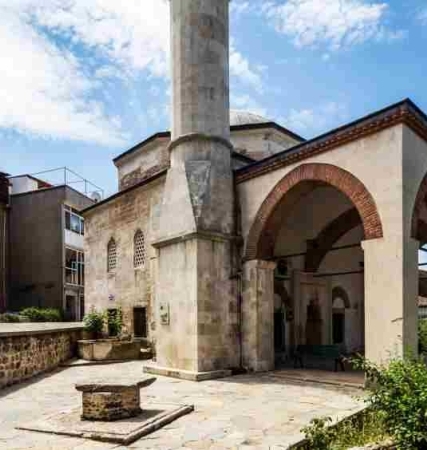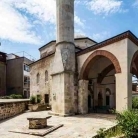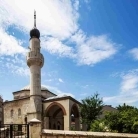According to the inscription on the gate, it is understood that the masjid was built by Abdullah son Hacı Şahabettin in H. 8401 1436-37. It was built on a sloping land from west to east. The south and east walls of the harim face the road. Smooth cut stone was used on the harim walls, rough hewn stone and brick on the pulley, and only brick was used on the dome. On the north façade, rough chipped stones placed between brick beams were placed vertically with bricks. The south and west facades of the masjid are in the same order. Both facades have four windows arranged in two rows.
All of the windows in the lower row are rectangular in shape and the windows in the upper row have pointed arches. At the north end of the east façade is the harim door. The door is framed in a rectangular frame and has a flat arched opening in a pointed arch. Inside the pointed arch, there is a two-line Arabic construction inscription on a rectangular panel. There is a half rumi decoration on both sides of the book frame. The two-eyed last congregation place in the north is covered with two vaults resting on three pillars with pointed arches. In the centre of the north wall, there is an exterior mihrab protruding outwards. The five-sided mihrab niche is covered with a muqarnas. The transition to the round dome in the harim is provided by pendants. The mihrab, which slightly protrudes outwards, has a half octagonal plan. A cupboard niche was opened in the centre of the west wall.



















